“We’ve arranged a society on science and technology in which nobody understands anything about science and technology, and this combustible mixture of ignorance and power sooner or later is going to blow up in our faces. – Carl Sagan
On August 15, Jessica Rosenworcel of the Federal Communications Commission spoke about accessibility and inclusion at a conference at Gallaudet University for the deaf and hard of hearing in Washington D.C.
As Commissioner Rosenworcal noted, “the ADA (Americans with Disabilities Act) was signed into law 29 years ago by former president George H.W. Bush. Upon signing, he famously said: “Let the shameful walls of exclusion finally come tumbling down.” Exactly. Those words ring true today—just as they did in 1990. Because 29 years ago this law laid the foundation for the meaningful inclusion of 60 million Americans with disabilities in all aspects of modern life.” “Title IV of the Americans with Disabilities Act became part of the Communications Act. It tasked the FCC with making sure that telecommunication relay services are widely available…. Access for all was enshrined in the law. A few years later, in the Telecommunications Act of 1996, the FCC was tasked by Congress with improving access to communications equipment, ensuring it is designed, developed, and accessible for those with disabilities. Once again, access for all was in the law.”
“The way I see it is that there are three values at the heart of the Americans with Disabilities Act and its successors, like the Twenty-First Century Communications and Video Accessibility Act.”
“First, non-discrimination.”
“Second, under the Americans with Disabilities Act, functional equivalency has been the foundation of our telecommunications relay service policies… for millions of Americans with hearing and speech impairments, it means they have the right and ability to pick up the phone, reach out and connect, and participate more fully in the world.”
“Third, inclusion. One area where the FCC has done significant work to promote inclusion involves closed captioning.”
SOURCE: FCC: COMMENTS ON ADA REMARKS OF COMMISSIONER JESSICA ROSENWORCEL TWENTY-THIRD TDI BIENNIAL CONFERENCE “WITH ACCESS EVERYONE WINS” GALLAUDET UNIVERSITY WASHINGTON, DC AUGUST 15, 2019
https://docs.fcc.gov/public/attachments/DOC-359099A1.pdf
Regarding the ADA, The Federal Communications Commission is Negligent
There is a flip side to the FCC’s promotion of its efforts regarding inclusion and protection of human rights.
The FCC is perhaps the single most powerful force in denying growing evidence of illness and disability, by protecting corporations causing harm. The FCC is providing justification to those industries actively discriminating against and causing avoidable harm, pain, degeneration, and suffering to a portion of the population: those Americans Becoming Disabled by the FCC.
In a November 18, 2013 joint filing to the FCC, the cities of Boston and Philadelphia accused the FCC and federal health agencies of negligence for failing to investigate whether electrosensitive persons are harmed by non-ionizing radiation.
The FCC admits its own lack of expertise in the field. But the overlap of federal agency responsibilities for RF radiation protection and the merely advisory status of the Radiofrequency Interagency Work Group often leaves leadership unclear and encourages a pass-the-buck attitude …
The 1999-2000 judicial challenge to the FCC’s 1996 rules never reached the issue of “electrosensitivity” as a cognizable disability under the Americans with Disabilities Act. (“ADA”) Here again, an agency responsible for ADA implementation acknowledges that the impairment may be disabling but has promised merely further inquiry. After more than a decade, that investigation remains unopened. The dockets here have been updated with massive additional evidence of the crippling effects of RF radiation on an admitted minority – but a suffering minority – of U.S. citizens. The FCC and its sister regulatory agencies share responsibility for adherence to the ADA and should replace promises with serious attention to a serious medical problem. This is one area where the FCC could lead in advice to electrosensitive persons about prudent avoidance.
As noted in the joint filing, in 1999-2000 the FCC had already begun a pattern of systematically ignoring evidence of the need for protections of electro-sensitive individuals.
Then, in March of 2013, the FCC’s office of Engineering and Technology opened Docket 13-84 Reassessment of Federal Communications Commission Radiofrequency Exposure Limits and Policies and ignored the preponderance of over 1,000 testimonies indicating that FCC limits are inadequate and that radio frequency exposure is linked to other adverse health effects, including cancer, infertility, DNA damage, and neurodegenerative conditions.
The pattern of neglect has accelerated with current plans for the rollout of 5G fifth generation telecommunications infrastructure, using faster millimeter wave frequencies and requiring extensive antenna densification, especially near homes, and already being mounted on lampposts and utility poles across the country.
Many of the expert submissions submitted to the FCC and ignored by the FCC indicating the need for new science-based exposure limits are indexed by Joel Moskowitz on the website Electromagnetic Radiation Safety.
SOURCE: Part I: Why We Need Stronger Cell Phone Radiation Regulations–Key Testimony Submitted to the FCC
https://www.saferemr.com/2014/08/part-i-why-we-need-stronger-cell-phone.html
Prudent Avoidance is Increasingly Impossible
In her speech at Gallaudet, Commissioner Rosenworcel noted that hearing-impaired individuals now “have the right and ability to pick up the phone, reach out and connect, and participate more fully in the world.”
Meanwhile, a marginalized population not only can’t participate in the world; these individuals do not have the right or ability to protect their health in their own homes. (And as the FCC eliminates copper landline phones individuals requiring corded landline access will not be able to pick up a phone anytime, anywhere.)
Due to lack of federal response, health-vulnerable residents are placed in the position of having to beg for consideration from utility companies, public servants, telecommunications companies, communities, and neighbors. This has resulted in an environment where the protection of human rights and health is uneven at best, with most of the affected individuals usually being systematically bullied and ignored.
For example, the forced installation of wireless gas, water, and electric meters has reportedly caused the acute onset of electromagnetic sensitivity in some individuals, while exacerbating health challenges and symptoms in others. (Lyme and MCS Multiple Chemical Sensitivity patients are among the populations that have been noted to be at risk of developing EHS and requiring protection, as well as those with compromised immunity.)
Essential Services: Heart-Breaking Harassment and Lack of Inclusion
No scientific research regarding environmental impacts or human health was conducted prior to the rollout of wireless smart meters and smart grid infrastructure. Subsequently, wireless electric meters have been demonstrated to alter the human heart rate in some individuals.
In 2010, Magda Havas published peer-reviewed research demonstrating that DECT cordless phones cause heart rate alterations in some individuals.
Nonetheless, in 2019 in Massachusetts, a resident of Plymouth County with a heart condition for which she was recently hospitalized provided a letter from her physician to her town water department. Her physician stated that she needed to receive an opt out from the wireless water meter. The town was notified of her low blood pressure challenges, and informed that lack of access to water would present a serious dehydration and health risk.
In May of 2019, when she did not comply with an installation demand, the town shut off her water, causing both hygiene and dehydration risks during the peak heat summer months. The household remains without water despite reaching out to many agencies in the Commonwealth, including the disabilities board, attorney general, department of health, and elected officials.
In California, “Plumas Sierra Rural Electric Co-Operative (PSREC) disconnected electricity to the family of Stop Smart Meters! Director Josh Hart in February 2014 for refusing to pay the extortionate ‘opt out fee.’
However, on July 2nd, 2015, 16 months later, the electricity was restored to the Harts, and opt out fees dropped after an appeal hearing in Superior Court.
How and why are corporations practicing medicine without a license by overriding the health expertise of medical professionals, in favor of profit, and ignoring accommodation requests? Thanks to the FCC.
The Russian Roulette Wheel of Accommodation
With the federal regulator FCC firmly entrenched with the industry, where no state protection is in place, the accommodation decision is often left to the town, or the utility provider.
Many towns including Southborough, MA threatened water shut-offs if customers did not accept a transmitting water meter.
In Holyoke, Massachusetts, a yearlong effort was required by Kirstin Beatty of Last Tree Laws, who was diagnosed with electrosensitivity by three different doctors. She requested removal of wireless gas and electric utility meters. “Brian Beuregard, an employee, was kind enough to find me an alternative [non-transmitting electric and gas] meter and respond to numerous emails.” When the transmissions stopped, her health improved, white blood cells rose, and her nausea and headache decreased.
Like many, Kirstin had to pay for her non-transmitting meter.
Often a meter read fee is levied. The town of Acton, MA surcharges customers who desire an opt out meter a $25 fee per reading cycle (currently quarterly) and a fee to remove the wireless water meter. After years of contentious opposition at Town Meeting, Wayland, MA approved wireless water meters and intends to charge $20 per quarter to read the meter. Everett, MA also accommodated a resident request for accommodation, and charges $20 per quarter.
Nearby Melrose charges $50 per quarter year for the water meter opt out reading. Given that many customers with environmental health challenges including MCS and EHS have difficulty finding work and are low income customers, the surcharge is especially punishing and discriminatory, especially if the meter’s 24/7/365 pulsed frequencies caused the environmental overload in the first place. There is no research indicating that the meters are not causing adverse symptoms.
Health vulnerable homeowners with gas, water, and electric meters are faced with the prospect of having to pay protection money times three for access to essential services. Extra fees for meter reads are unnecessary and unjustified, as many jurisdictions offer the option to self-report via postcard. Were protections in place under the ADA, the punitive surcharges would be illegal.
Most jurisdictions have relied on industry claims and FCC “protections.” Only in rare cases have towns been graciously accommodating. Concerned residents in Manchester, Massachusetts who contacted the town were immediately offered the option of disconnecting the wireless transmitter and self-reporting their water readings to the town at no fee.
Brought to You by the FCC: Punitive Surcharge and Harassment, or No Accommodation At All
Massachusetts electric utility Eversource has provided no accommodation for residents seeking a non-transmitting meter, claiming that analogs are not available, despite the fact that Maine customers can pay a surcharge to retain an analog meter. Analogs are also available for purchase on the internet.
From Maine: Regulators said “offering a smart meter opt-out option is reasonable and in the public interest,” according to a press release from the PUC. Customers who do not want a smart meter installed at their residence will have two opt-out options: using a smart meter with its wireless transmitter turned off or keeping their analog meter. However, customers must pay fees in order to opt out. The first option requires an initial fee of $20 and a monthly charge of $10.50, while the second carries a $40 initial fee and a $12 monthly charge.”
SOURCE: https://www.mainebiz.biz/article/cmp-ordered-to-offer-smart-meter-opt-out
Investor-owned utility National Grid petitioned the MA Dept. of Public Utilities in 2013 to surcharge customers seeking to opt out of gas and electric meters, securing a fee of $26 to remove each meter and $11 month for meter reads, even for months when the meter is not read. (MA DPU 13-83)
When Electricity is Dirty, Energy Efficiency and Accommodation is a No-Win
Yet the opt-out meter does not address all of the health risk factors. Electronic meters introduce both wireless radio frequency exposures and high voltage transients that can ride on the household wiring and plumbing. Electrical engineer Bill Bathgate and others have explained that the design of modern wireless meters can pollute the electrical wiring in homes with other frequencies, leading to harmonics and transients. In his book Dirty Electricity Dr. Samuel Milham discusses how a clean 60-hertz wave can be disrupted, and how these disruptions are statistically linked to poor health. Modern wireless meters and many energy efficient devices use a switch mode power, which adds “dirty electricity” and disrupts power quality. This also reduces the lifetime of electronics. If no analog is offered, customers are being forced to pay a fee and then provided with a meter that only addresses part of their concerns.
Mass Save recently provided an energy audit for the home of an EHS individual who has paid nearly $1,000 in surcharges to National Grid over the years for an opt out meter. Mass Save replaced her lights with “energy efficient” LED bulbs that polluted the power quality in the home. This caused the resident to experience a dramatic downturn in her health, until the lighting was removed. (The Building Biology Institute offers many tools for assisting individuals and buildings in healthy building design, including lighting.)
Assessing Impacts of Wireless, We Need to Have Our Heads Examined
When individuals have reported harm due to proximity to smart meters, smart infrastructure, solar inverters, variable speed motors, LED lighting, dimmer switches, and proximal telecommunications infrastructure including towers and antennas, the industry has responded by simply measuring the transmissions against outdated and inapplicable FCC limits.
This is both inhumane and unscientific.
The FCC tests cellphones by taking the temperature of a plastic head filled with the equivalent of Jell-O. Now it appears that the FDA has joined forces with the FCC to utilize manufactured tissue samples for “health research.” This is simply mad science. It is not only contributing to unrelenting suffering, but it is a massive waste of resources.
Rather than addressing infrastructure repairs for issues like lead in the water and gas leaks, the nation was misguided into buying into a surveillance system masquerading as sustainability. It would be absurd to have a fire alarm send a message every 2,000th of a second that there is no fire, and to build massive data centers to analyze the data, and to pay technocrats to analyze and monetize the data. There is only a need for a transmission in the case of a fire. The wireless industry has been allowed to build a burgeoning demand for wireless infrastructure through frivolous use of technology. The massive collection of consumption and usage data is a wrong turn for humanity. We’re revisiting the point in history when all the doctors were smoking, and cigarettes were promoted for digestive issues or a sore throat.
We are letting the wrong people ask the wrong questions, including the tobacco scientist shills now working for the wireless industry. This is no longer a question of whether or not or how to accommodate the canaries in the coalmine; it is whether or not we will rethink the entire belief system held by the consumer culture about the safety of wireless devices, as cities and towns are overloaded with transmitters.
And, this is a basic question about human rights. Human experimentation went awry at other times in history. It is off the rails again.
“In a herd of deer, we need some super-sensitive ones. They are the ones that will hear that teeniest little crack, or smell the one or two molecules of scent from the mountain lion that’s stalking them. Their job is to use their hyper-sensitivity to alert the whole group.” ~ Peter Levine
If we do not address the charade at the FCC, we will burden future generations with unfathomable injury and incalculable harm.
Albert Einstein is credited with the quote, “It has become appallingly obvious that our technology has exceeded our humanity.” In the meantime, public servants and decision makers have the opportunity to do the right thing in their own communities, by challenging the incomplete and corrupted science, calling for independent research, dropping the surcharges, and turning the water and power back on.
“Let the shameful (and idiotic) walls of exclusion finally come tumbling down.”
No Kidding Commissioner.
Want to learn more?
Register Now for The 5G Crisis: Awareness & Accountability Summit. Online and FREE from August 26 – September 1, 2019.
Subscribe to Activist Post for truth, peace, and freedom news. Follow us on Minds, Twitter, Steemit, and SoMee. Become an Activist Post Patron for as little as $1 per month.
Provide, Protect and Profit from what’s coming! Get a free issue of Counter Markets today.

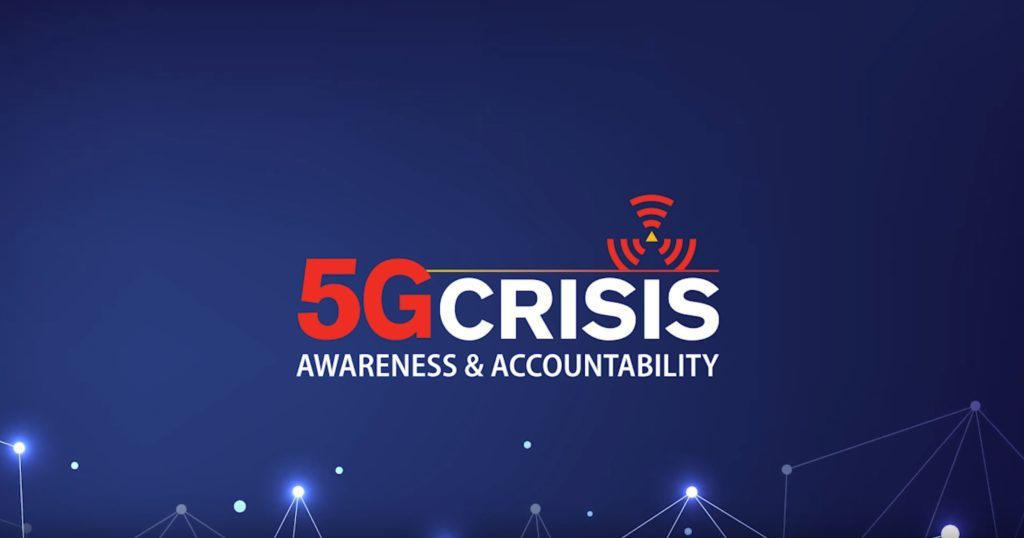
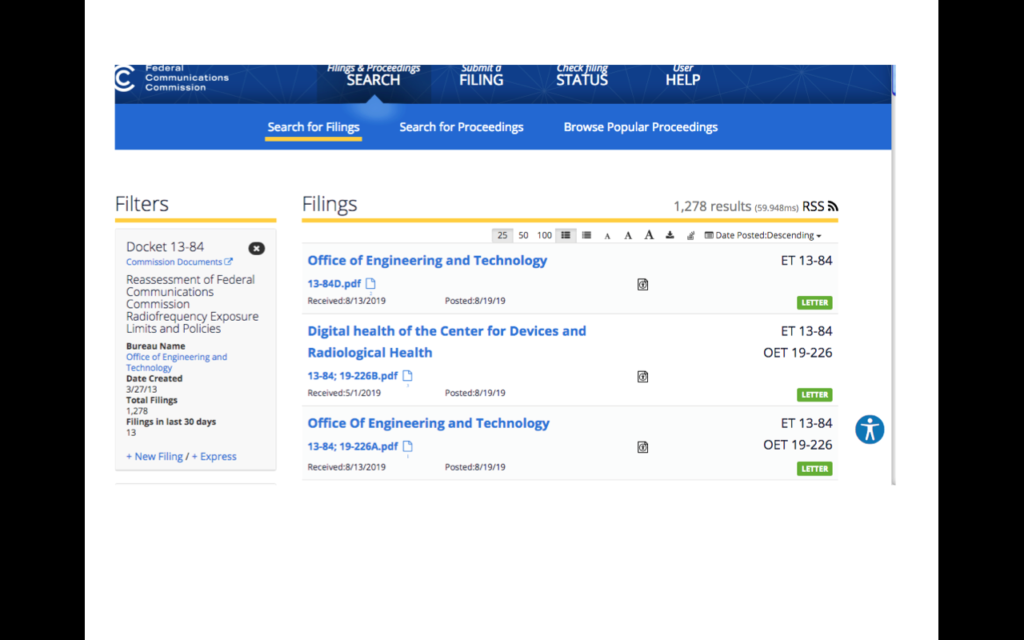
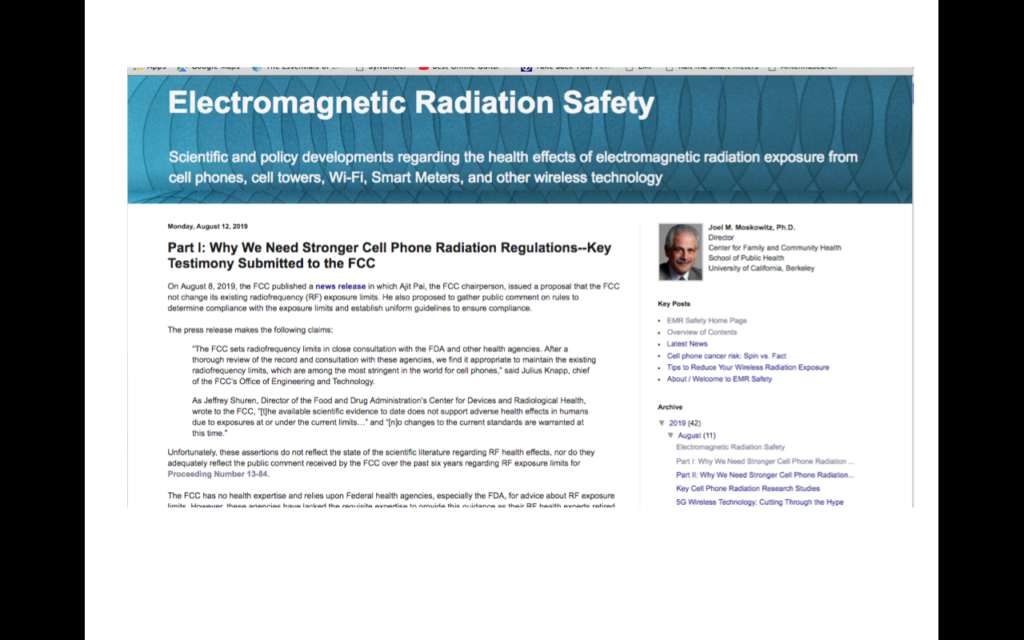
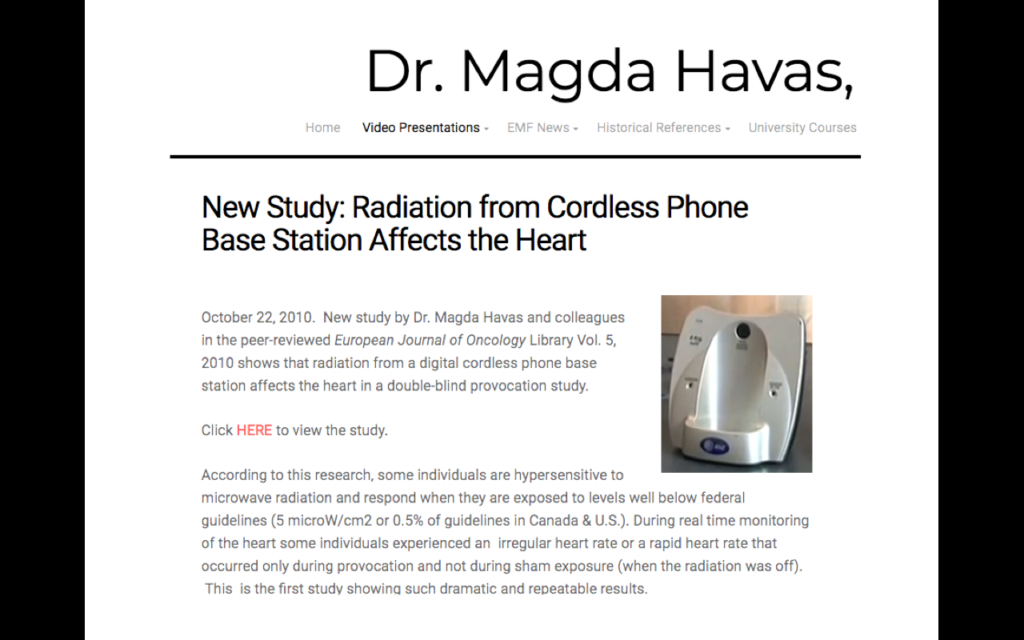
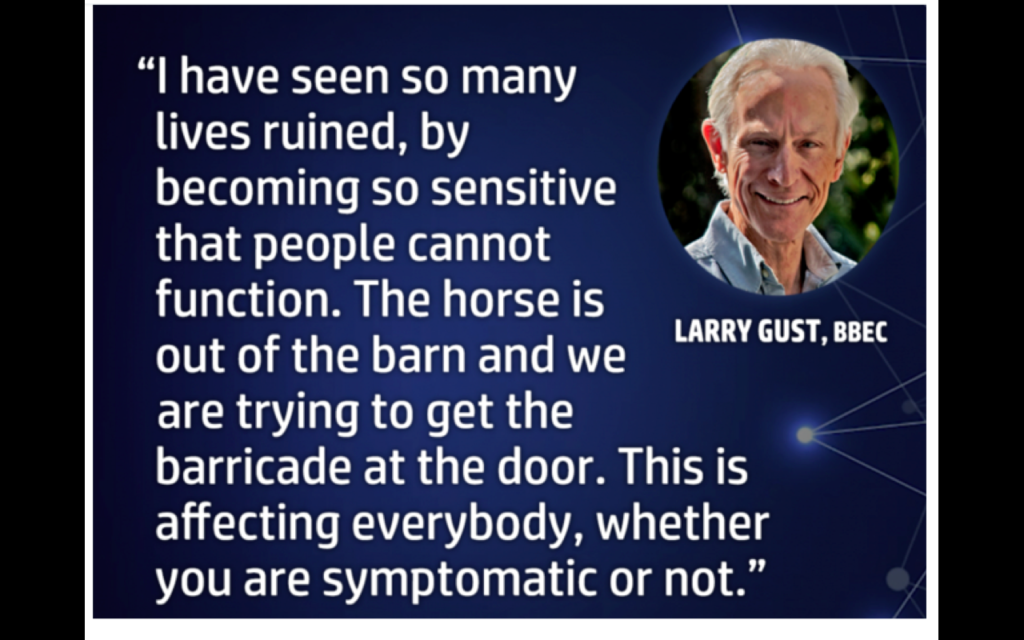
Be the first to comment on "EHS, ADA, FCC and 5G — Time for a Reboot"